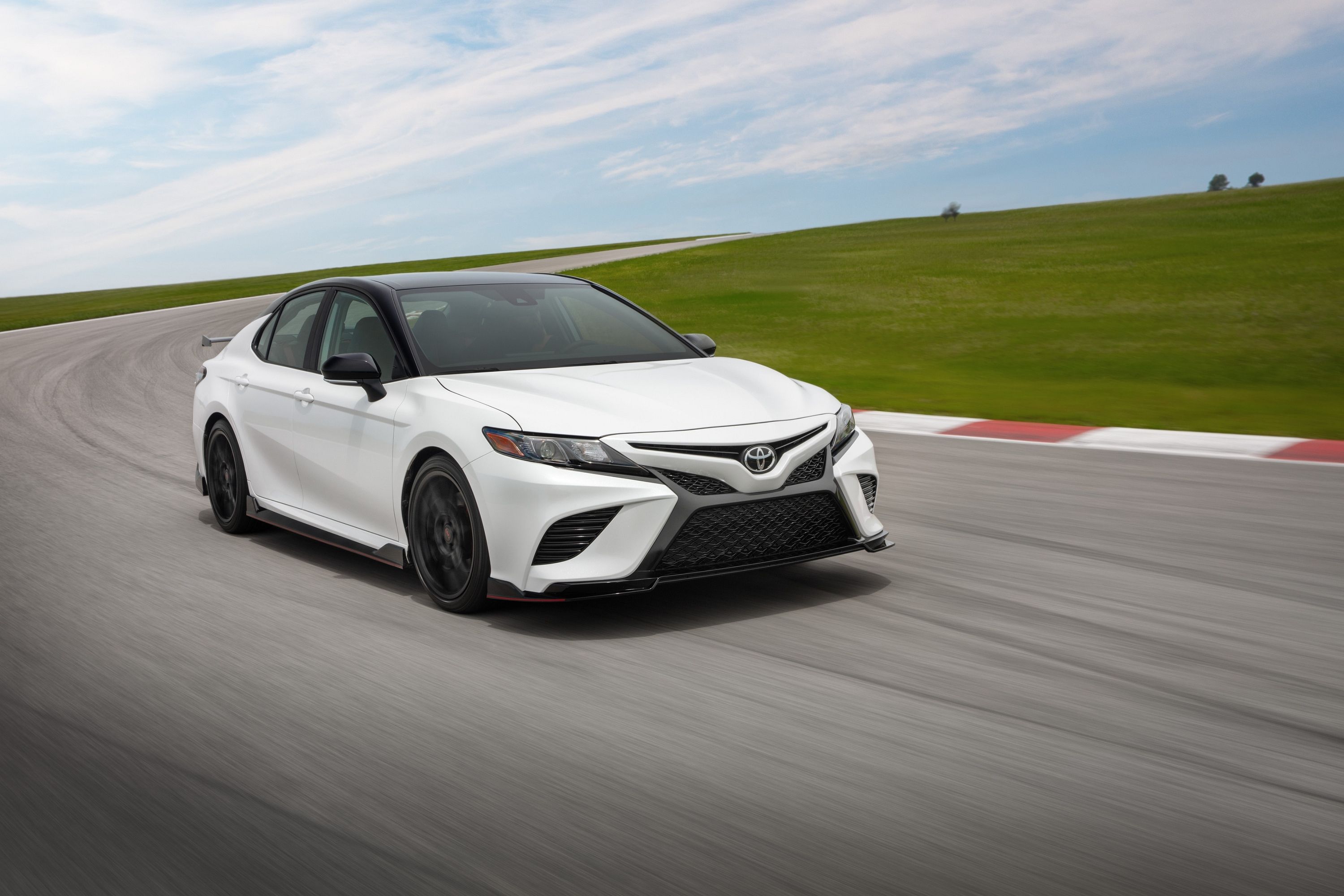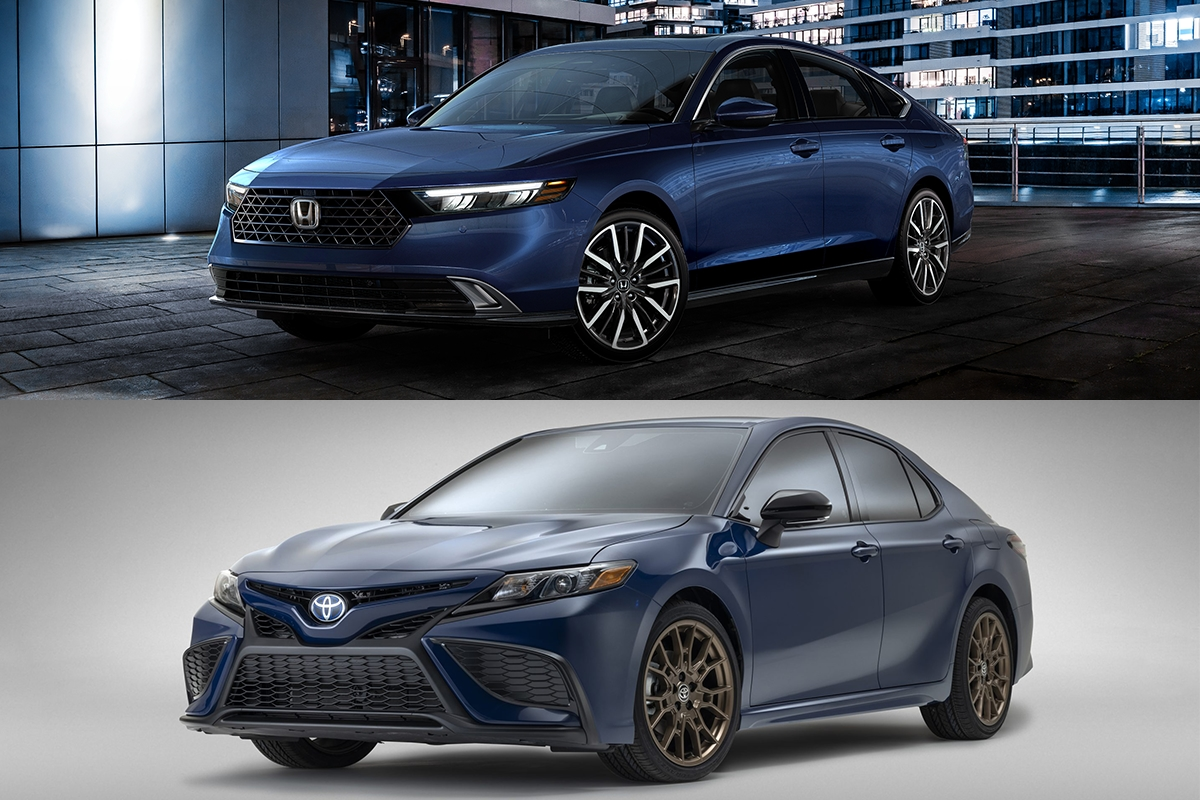
High-selling mid-size sedans are rare, but the two models that have maintained relevancy in this shrinking segment are the Honda Accord and Toyota Camry.
Last year, they were the only two sedans of this size to make the top 25 bestsellers list in the USA, and they've continued finding thousands of homes this year. Now that Honda has come out with an all-new Accord, it's the perfect opportunity to see if it can topple the ubiquitous Camry.
Both come with the option of efficient hybrid powertrains and boast spacious cabins, but the Accord has Honda's latest infotainment tech and sleek new styling. Let's find out if the Accord has surpassed its rival.
Exterior Design: Newer Is Better
Traditionally, this hasn't been the segment to shop in if you're looking for something that will make your neighbors glare across the road in envy. Both cars have fairly conservative designs, but Honda has neatened up the Accord's edges to create a sedan that exudes sophistication.
It's characterized by a broad stance and a low horizontal beltline, and there is an unmistakable resemblance to the new Civic. Gone are the outgoing model's fussy taillights, replaced by neater LED straight-line taillights. The fastback roofline is more unique than the Camry's conventional profile, and the Honda takes the lead mostly because it's a fresher, less familiar shape.
Both models ride on 17-inch alloys as standard, but each can be specified with 19s. In terms of size, the Accord is now a larger car in every significant metric, although the differences are minor; it's 3.6 inches longer than the base Camry, for example.
If you prefer a sportier look, the Accord Sport-L and Camry TRD have a variety of extra black trimmings to set them apart from the cheaper models.
Performance: Efficient Accord Outgunned By Camry V6
There are two Honda Accord engines to choose from, and both have been improved. The standard mill is a 1.5-liter turbocharged four-cylinder with 192 horsepower and 192 lb-ft of torque. This model comes with a continuously variable transmission. Upper trims come with a new two-motor hybrid-electric system that combines a pair of electric motors with a new 2.0-liter Atkinson cycle four-cylinder engine. The combined output is 204 hp, and the torque is rated at 247 lb-ft.
In terms of outputs, the Accord is outgunned by the Camry. The base Camry has a 2.5-liter four-pot with 203 hp and 184 lb-ft; it's more potent than the base Accord, but it has less torque and needs to be revved harder to perform. Certain versions of the Camry with this engine make 206 hp/186 lb-ft.
With an electric motor, the Camry Hybrid makes a combined 208 hp, but it's the V6 Camry that sets the Toyota apart. This 3.5-liter mill produces 301 hp and 267 lb-ft and can hit 60 mph in under six seconds. It may not be as efficient, but no version of the Accord will keep up with it. Camry hybrids have a CVT, while non-hybrids have a conventional eight-speed automatic.
While we expect the new Accord to be refined and efficient, the absence of the previous 252-hp 2.0-liter turbo engine with its 10-speed transmission is a disappointment, and the Accord still lacks an all-wheel-drive option. The Camry's available V6 and AWD system still give it an edge.
Interior: Smart And Spacious Accord Takes It
For the 11-generation Accord, Honda has adopted a new design language that bears more than a slight resemblance to the new Civic. It looks classy and restrained but not dull, and like the Civic, we expect all the controls to fall naturally to hand.
One disappointment is the small seven-inch touchscreen on the Accord LX and EX models. You must upgrade to one of the remaining four trims to get the 12.3-inch HD touchscreen. Then again, the base Camry also has a small seven-inch touchscreen, and here you can upgrade to a nine-inch unit. What is nice is that every Accord comes with a 10.2-inch digital instrument panel as standard, whereas the Camry has more traditional analog gauges. The Accord can now receive over-the-air updates.
For the first time, a new Honda has Google built-in for the infotainment interface, but this is limited to the top Touring trim. With Google Assistant, Google Maps, and Google Play, we would've also liked to see this system on some of the cheaper trims. There are other goodies like a six-inch head-up display and 12-speaker Bose sound system on the Accord Touring, but at least all trims have Apple CarPlay and Android Auto.
The Toyota has a larger available ten-inch head-up display. Although we have no major qualms about the cabin of the Camry, it now looks a bit fussy alongside the Accord, and we've previously found base Camry models to use too many harder plastics.
Both of these cars are known for their spacious interiors, and that hasn't changed for the latest Accord. It has a comfortable 40.8 inches of rear-seat legroom, more than the 38 inches in the Camry. Honda says that the Accord has the most cargo space in its class, with 16.7 cubic feet behind the second row; by comparison, the Toyota provides 15.1 cubes.
Between the Honda Sensing and Toyota Safety Sense 2.5+ suites, both cars come with the essential driver-assist gear as standard, with high-tech upgrades available via the options list.
Pricing And Verdict: As Close As Ever
Pricing for the new Honda Accord was unavailable at the time of writing, but we expect a slight increase over the current Accord's starting price of $26,520. The 2023 Toyota Camry begins at $25,945, but you can expect to pay over $35,000 for the top-tier models in both cases.
The new Honda Accord looks more upmarket than before, has a more refined interior, better integration of technology, and class-leading space. We also expect both engine options to be very efficient. We expect it to edge out the Camry at a base level once we've driven both cars.
However, with an available V6 and AWD, the Toyota is still the easy pick for customers wanting more power or the security of an AWD system. It may not look as expensive as the new Accord, but the Camry is far from outclassed, and we expect this rivalry to remain close in the years to come.

